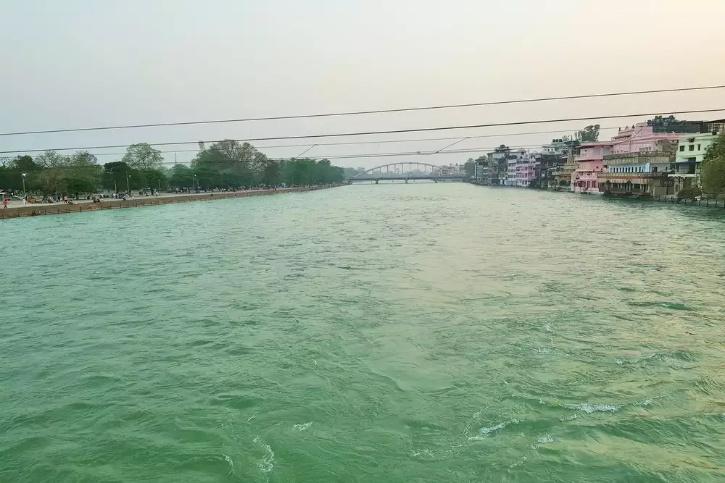No products in the cart.
River Ganga’s water quality improved during lockdown, becomes fit for ‘drinking’
When Yamuna River in Delhi attained a remarkable level of purity owing to the absence of industrial pollutants in the last many days of nationwide lockdown, River Ganga also showed its sparkling clear waters.
In May 2019, the Central Pollution Control Board (CPCB) had said that the water from the holy river Ganga was absolutely unfit for “direct drinking”.
In October 2019 the UP Pollution Control Board (UPPCB) had stated that the river water unfit even for bathing.

Ganga’s faecal coliform bacteria level is learnt to be 3 to 12 times higher than that of the permissible limit at most interstate boundaries, according to the data released by Central Pollution Control Board (CPCB).
For the unversed, Faecal coliform (FC) bacteria, like the fatal E Coli, are found in excreta that contaminates through untreated sewage. The greater the level of faecal coliform the greater is the chances of contaminating diseases.
The permissible limit for Faecal Coliform is 2,500 MPN (most probable number) /100 ml, while the desirable level is at 500 MPN/100 ml.
At Khagra in Berhampore, West Bengal, Faecal Coliform (FC) in the Ganges was known to be at its highest level, calculated at 30,000 MPN/ml which is in fact 12 times the permissible limit and 60 times more than that of the desired limit.
The Central Pollution Control Board has unveiled data of the river at around 9 inter-state boundaries passing through states of Uttarakhand, Uttar Pradesh, Bihar, West Bengal and Jharkhand.
It has been learnt that the faecal coliform was recorded within the allowable level in Bijnor and Uttar Pradesh and Sultanpur in Uttarakhand.
But since March this year and when the whole nation went into lockdown due to coronavirus, it forced the closure of the industries along its banks, the water quality has been improving dramatically.
As per the reports, the water quality has improved to a great extent that now it is fit for drinking.
“The Ganga is clean and pure today. Fish and other marine life are visible in the water. The ghats are fully clean,” Har Ki Pauri temple priest told ANI.
“We all want to see Ganga in such a beautiful state. It is a temporary phase due to lockdown. We will be happy if it remains in such a state even after devotees’ visit here,” another priest said.
One of the significant factors attributed to this improvement is the closire of industries including other manufacturing units that used to discharge excessive effluents and toxicants into the river ecosystem.
“There has been 40-50 percent improvement in the quality of water in Ganga,” Dr. PK Mishra, Professor at Chemical Engineering and Technology, IIT-BHU told news agency ANI.
“The water quality has improved but the water levels are low. Once the water levels increase, Ganga will appear completely clean,” a local resident added in a statement.








